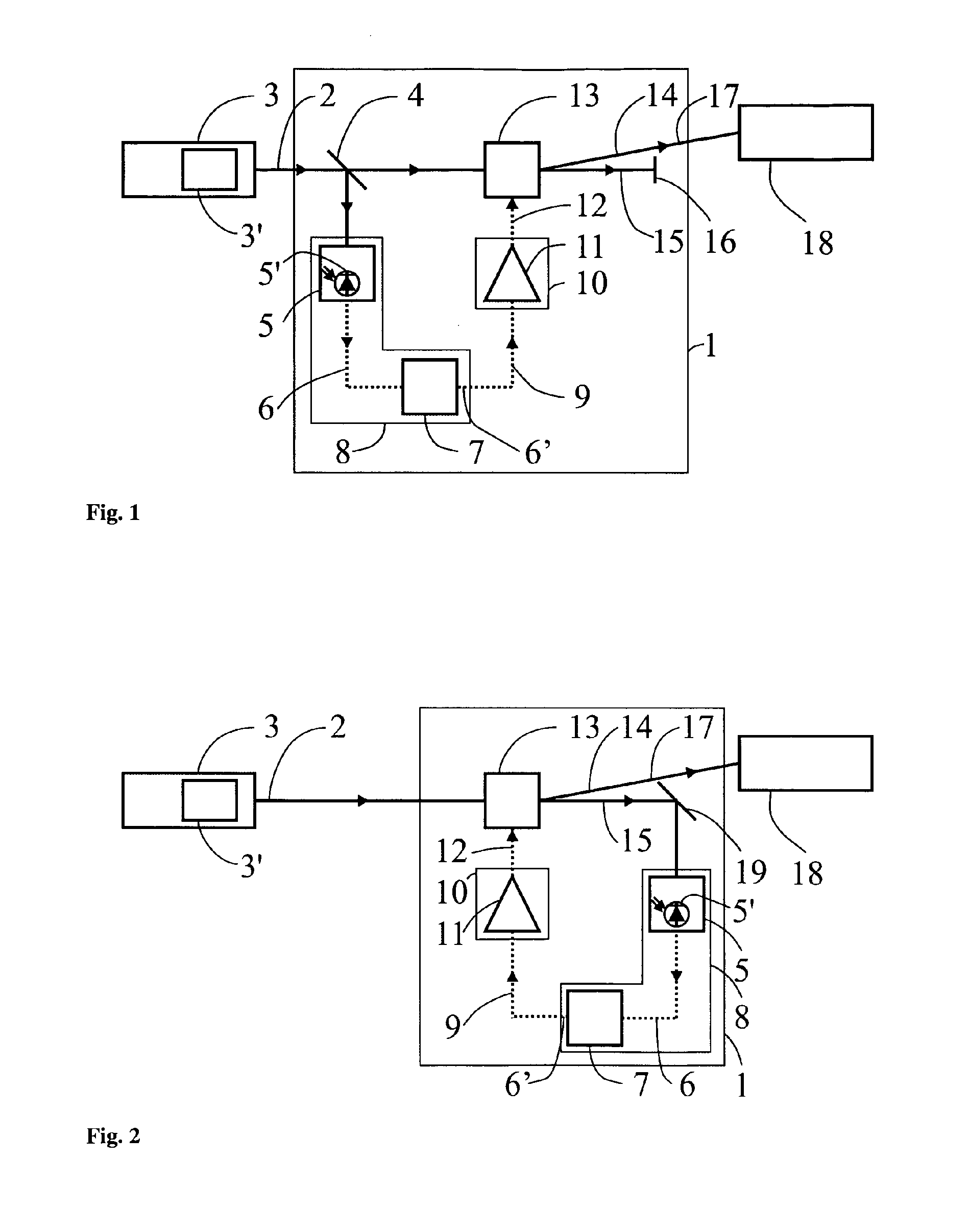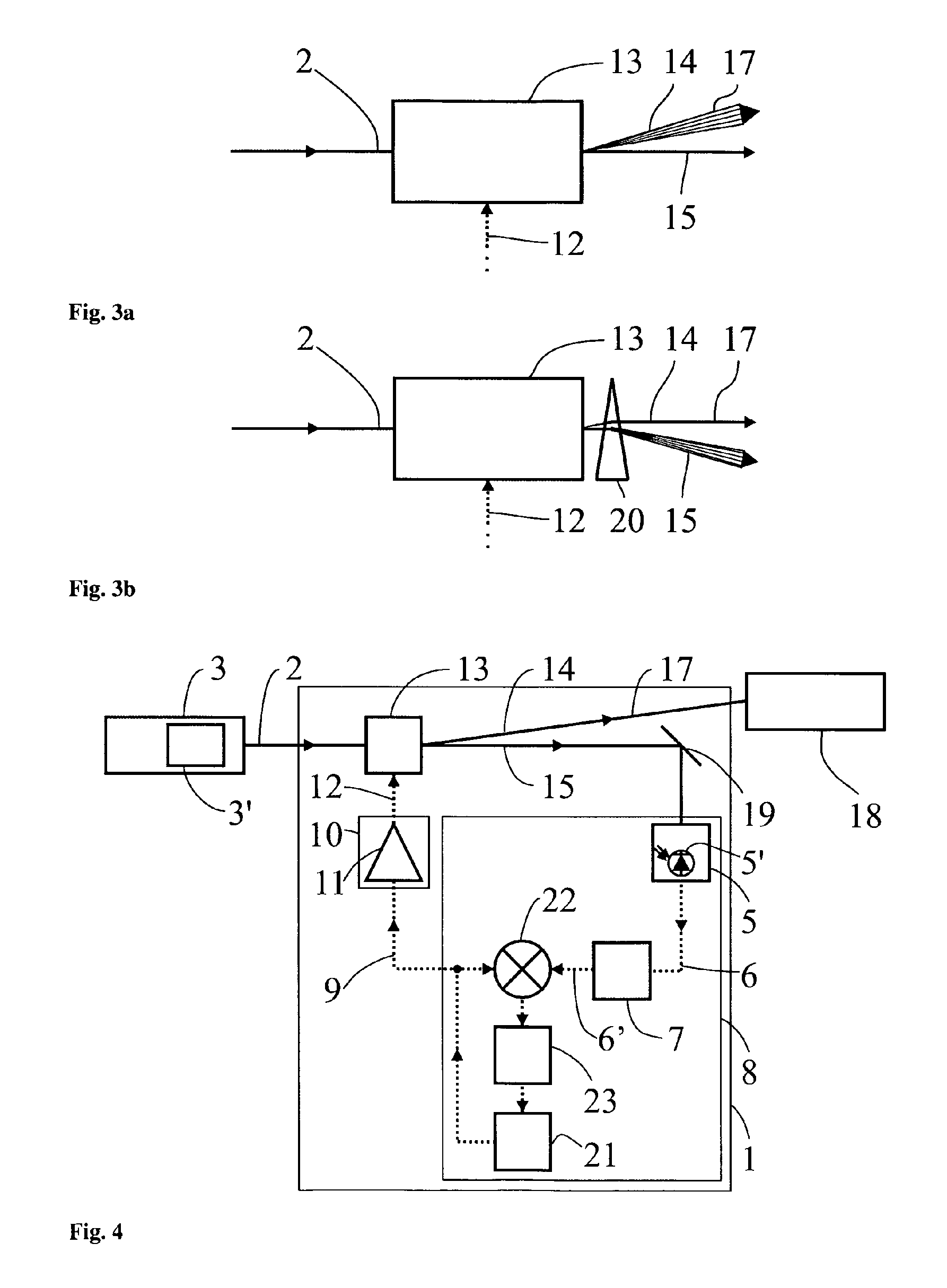Method and device for generating a self-referenced optical frequency comb
a self-referenced optical frequency and comb technology, applied in the direction of laser optical devices, laser details, instruments, etc., can solve the problems of the inability to accurately determine the offset frequency of the carrier envelope, and the inability to achieve the offset frequency. to achieve the effect of facilitating the operation of the device and the design
- Summary
- Abstract
- Description
- Claims
- Application Information
AI Technical Summary
Benefits of technology
Problems solved by technology
Method used
Image
Examples
Embodiment Construction
[0037]FIG. 1 schematically illustrates a device for generating a self-referenced frequency comb, or for generating a compensated train 17 of temporally equidistant short laser pulses, respectively, in which the individual lines of the frequency comb comprise a stabilized carrier envelope offset frequency. Such a device will be referred to as a device for generating a self-referenced frequency comb in the following. The device 1 is adapted to receive an uncompensated train 2 of temporally equidistant short laser pulses of a mode-coupled laser 3. The mode-coupled laser may, for instance, be a titanium:sapphire laser or an erbium fiber laser. The uncompensated train 2 of short laser pulses constitutes, when viewed in the frequency space, a frequency comb of equidistant individual lines that are also referred to as modes. The individual lines of the frequency comb have a frequency distance Δf corresponding to the inverse of the circulation period of one of the short pulses in the resona...
PUM
 Login to View More
Login to View More Abstract
Description
Claims
Application Information
 Login to View More
Login to View More - R&D
- Intellectual Property
- Life Sciences
- Materials
- Tech Scout
- Unparalleled Data Quality
- Higher Quality Content
- 60% Fewer Hallucinations
Browse by: Latest US Patents, China's latest patents, Technical Efficacy Thesaurus, Application Domain, Technology Topic, Popular Technical Reports.
© 2025 PatSnap. All rights reserved.Legal|Privacy policy|Modern Slavery Act Transparency Statement|Sitemap|About US| Contact US: help@patsnap.com



